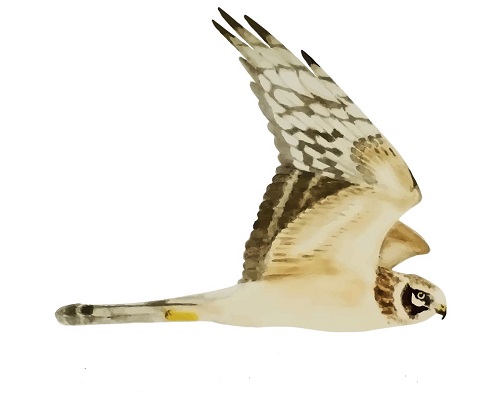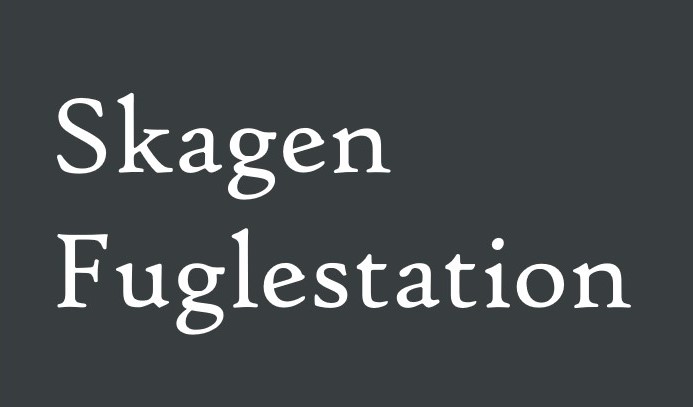Her på Skagen Fuglestations blog bringes korte nyheder i dagbogsformat om hændelser på fuglestationen.
Nightjar night
On Friday evening, Simon dropped Emma and me off at Sandmilen, together with a bunch of poles and equipment. While we were setting up the nets, we were joined by Henning Schmidt, who is monitoring some breeding populations of Nightjars “Natravn” since the mid-1990s.
When we went back from setting up the nets, we already saw the first Nightjar “Natravn”, a male, flying and landing in the branch of a tree, which put our hopes for many nightjars “Natravn” in the nets high.
Also Mark and his daughters joined us at our encampment.
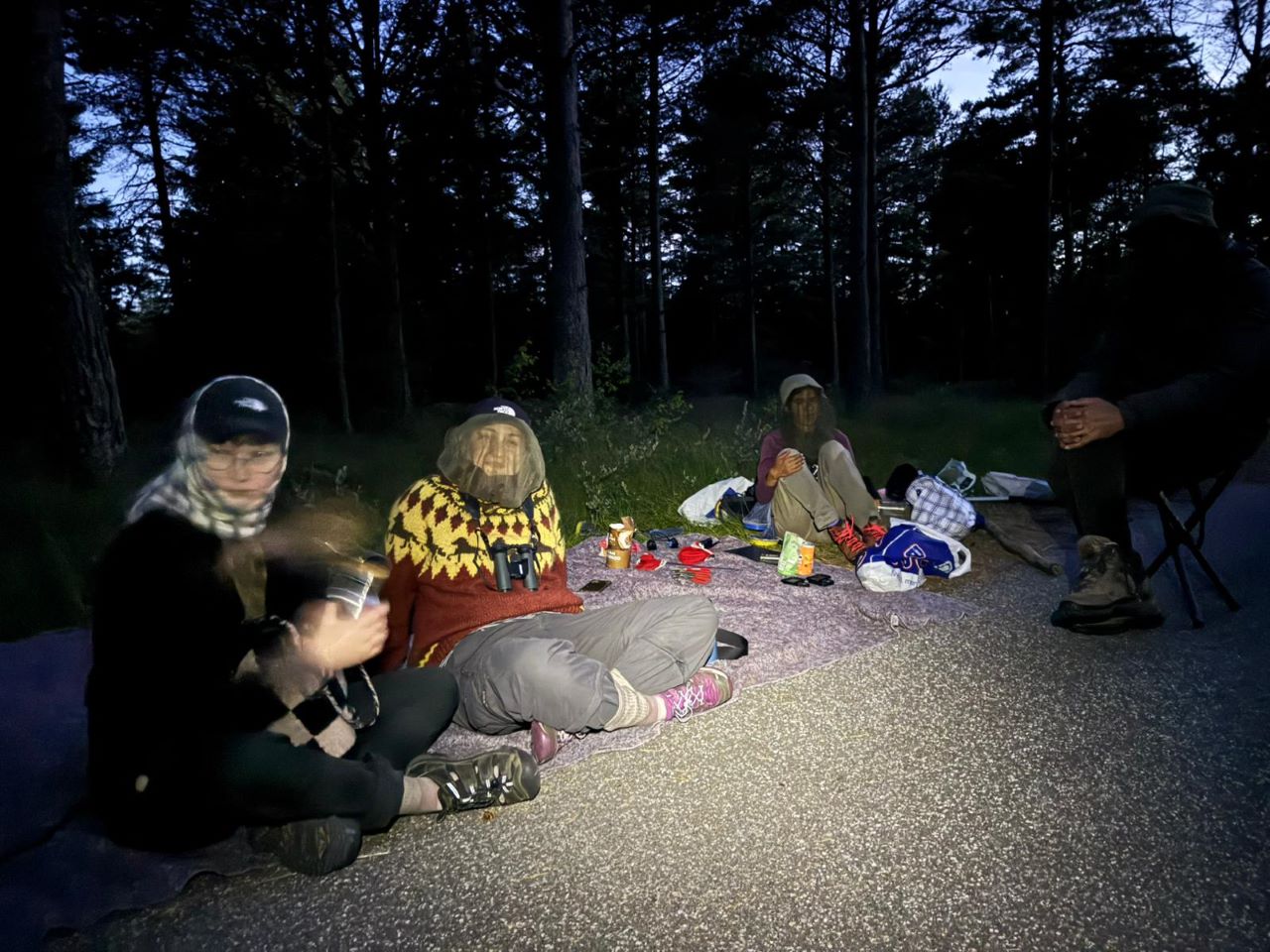 Waiting for the round with insect hats, covering most of our skin againt midges and moscitoes. Picture: Mark Desholm.
Waiting for the round with insect hats, covering most of our skin againt midges and moscitoes. Picture: Mark Desholm.
Our guests joined us for the first two rounds and unfortunately, they just saw empty nets apart from an Oak egger “Egespinder”, which is a rather big moth, which got caught in a net. Luckily, I managed to get it out and after a while, it flew away.
 Net-check. Picture: Mark Desholm
Net-check. Picture: Mark Desholm
We learned a lot of interesting things about Nightjars “Natraven”, for example, that they usually lay two eggs. The first egg and first hatched chick is usually a female, which is important for reproduction in the next generation. The second is either male or female and does not get fed is food is low. Luckily, the breeding populations of Nightjars “Natravn” were doing very well in the last years, so we hope that means they get enough insects, and most chicks get fed and survive.
Ather the second round, our guests left us whishing us luck for the next rounds. They had whished well, we got the first bird in the third round and two more in the fourth round. It was all females.
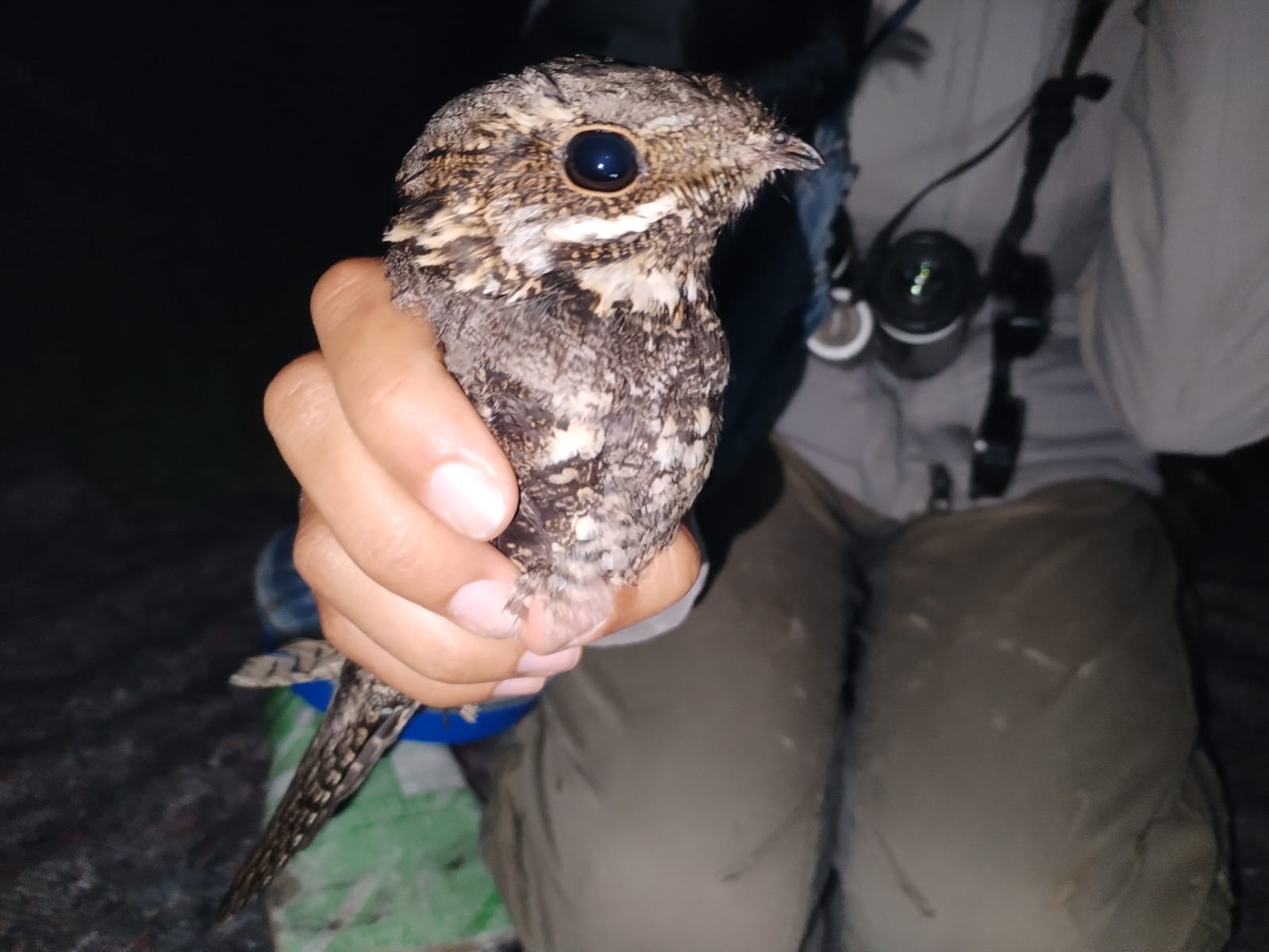 Nightjar "Natravn", female. Picture: Emma Fabre.
Nightjar "Natravn", female. Picture: Emma Fabre.
Fifth round was closing round, we saw Nightjars “Natravn” flying but nothing in the nets.
After the nets were down, we called Simon to pick us up.
Back at the station, I checked my moth trap, took pictures and released all moths before I went to sleep. I still need to put them all in the databases but saw already, that I had two new species, the Feathered beauty “Peribatodes secundaria” and Lygaphila pastinum “Vikkeugle”, which is called Blackneck (not Blackcap ;-) in English.
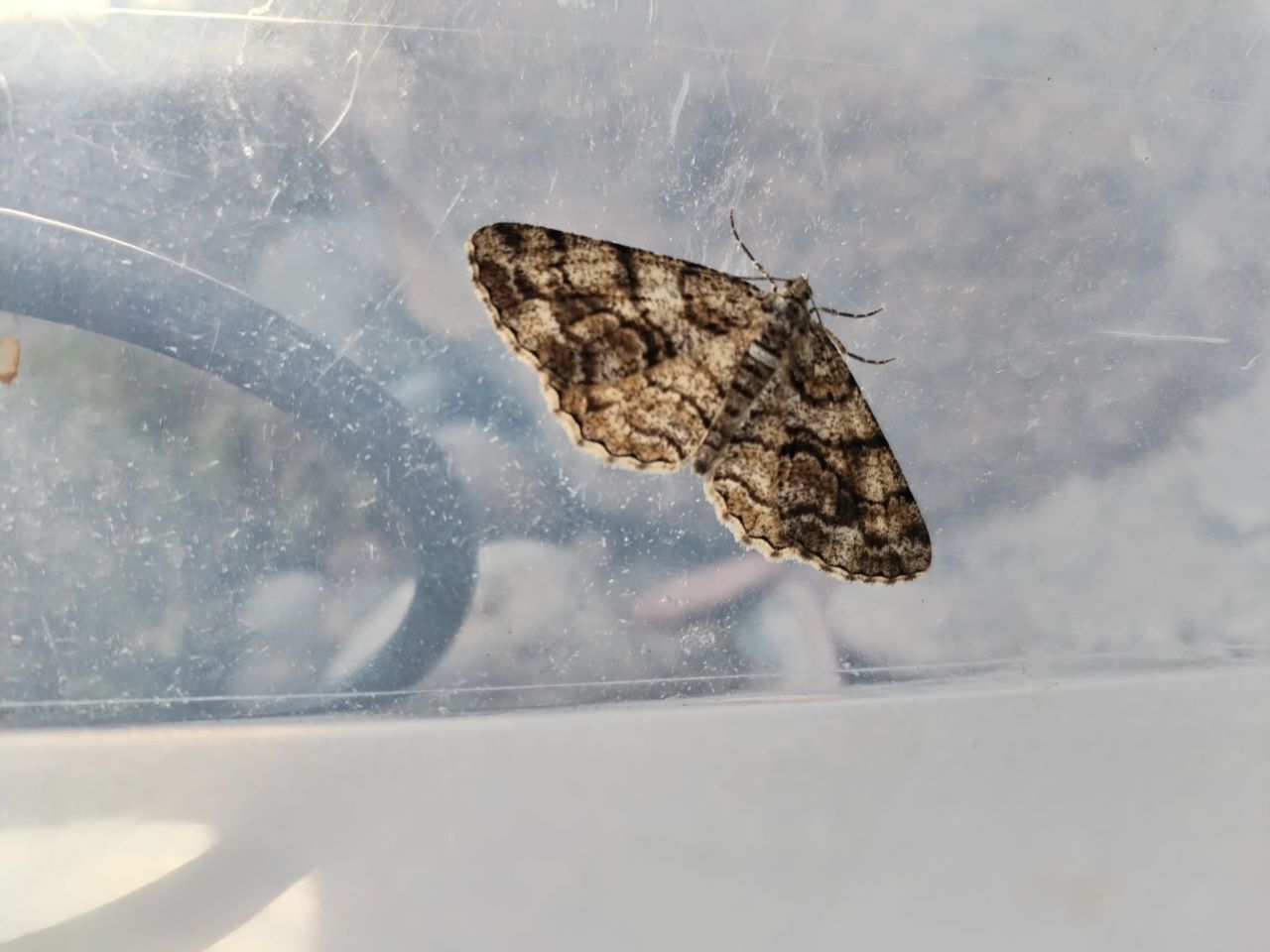 Feathered beauty “Peribatodes secundaria”. Picture: Hanelie Sidhu
Feathered beauty “Peribatodes secundaria”. Picture: Hanelie Sidhu
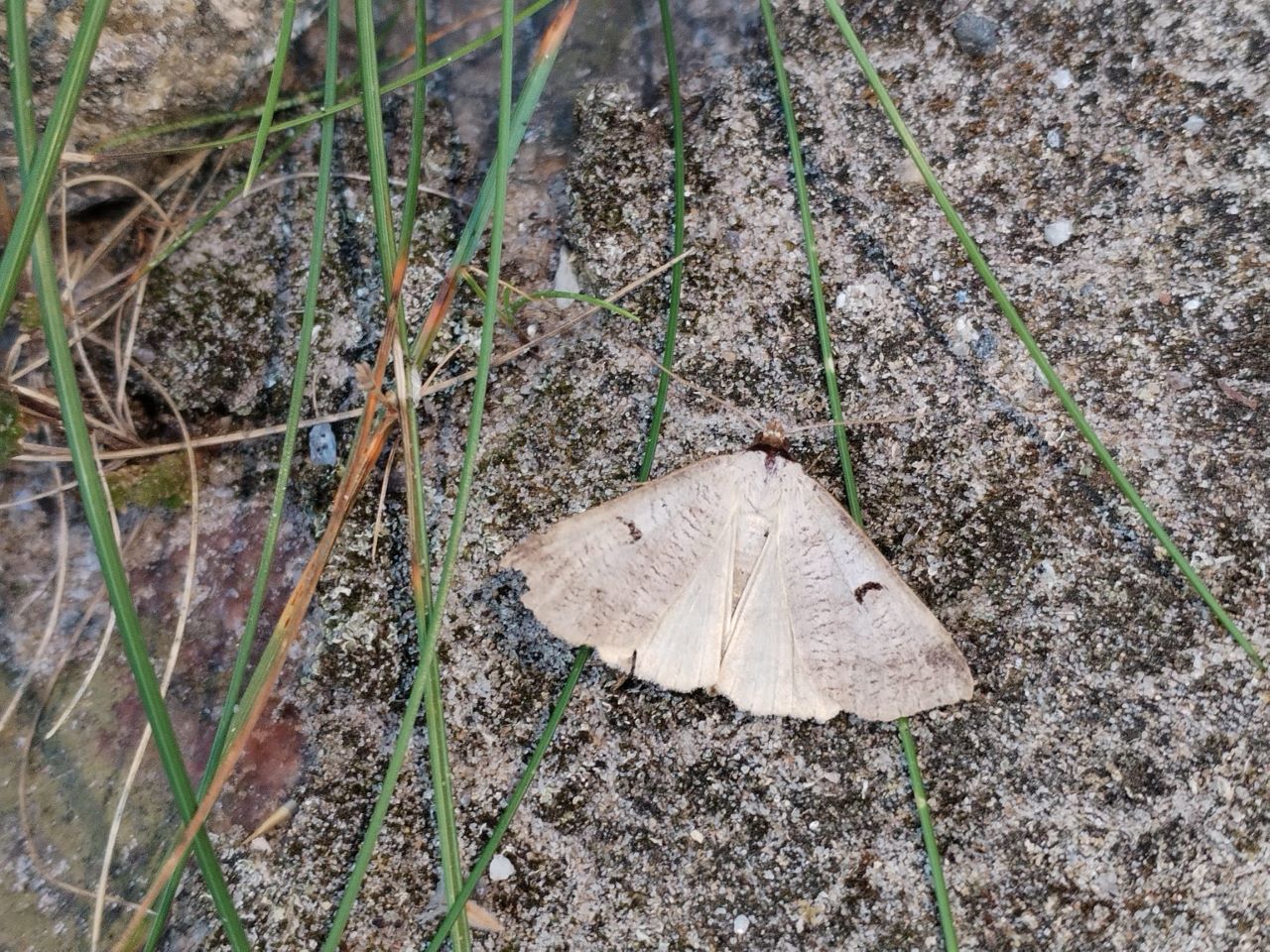 Lygaphila pastinum “Vikkeugle”. Picture: Hanelie Sidhu.
Lygaphila pastinum “Vikkeugle”. Picture: Hanelie Sidhu.
before I went tp bed I saied goodbye to Andrew, who left to a short stppover in Iceland and after home to Canada today. Good luck with birding and ringing Andrew, now again in less sandy areas!
After breakfast, which was in the early afternoon, we had a planning meeting with Simon and after that cleaned the station.
Link to today’s observations in Dofbasen from observers in the area
Ringing (Skagen Klitplantage):
Natravn - 3
People: Simon S. Christiansen, Henning Schmidt, Emma Fabre, Pauline Næhring, Hanelie Sidhu, our guests Mark Desholm and his daughters.
